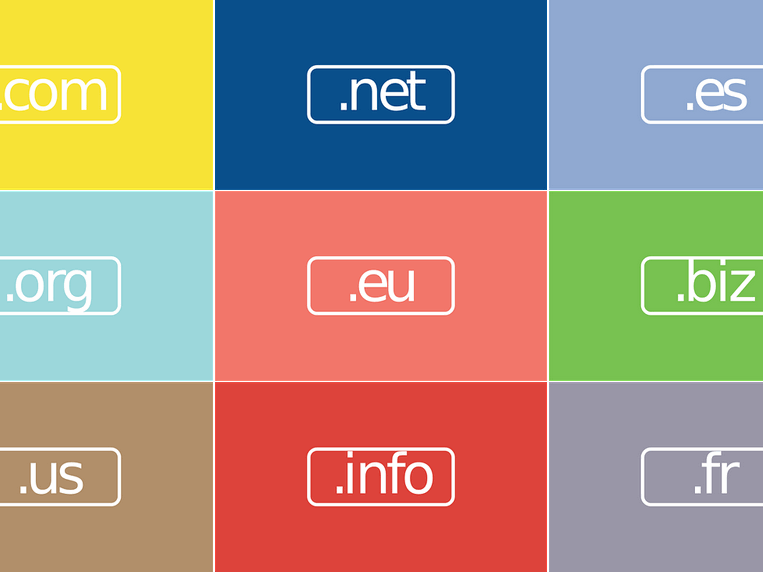by Joe Callon
When starting your eCommerce business, choosing a domain name for your store can be one of the most difficult phases of the process. Selecting something that’s short, memorable, and still in line with the name of your business is hard, especially considering the sheer number of names that have already been registered.
When starting your eCommerce business, choosing a domain name for your store can be one of the most difficult phases of the process. Selecting something that’s short, memorable, and still in line with the name of your business is hard, especially considering the sheer number of names that have already been registered.
Domain service provider Verisign reported in December 2015 that as of the close of the third quarter last year, over 299 million domain names had been registered. That means you’re up against a lot of people searching for that perfect home on the net.
There are a few key elements that can help determine the perfect domain name for your store, which should hopefully help you narrow down any contenders until you hit upon the right one.
1. The right TLD for you
One of the most important features of your domain name is the top-level domain (TLD) you choose. The most popular (and probably the best choice) TLD is .com, however you may also want to go more country-specific, whether that’s using a .co.uk or a .fr domain.
More and more TLD options are added to the web each year, so make sure to watch out for your niche and see if one pops up that might suit you. .clothing and .photography are already in considerably wide use, as well as .shop and .store.
Your TLD doesn’t have to be exclusive either, using a .co.uk domain on your UK marketing material that simply redirects to your main .com international site is completely acceptable, and sometimes standard in the eCommerce world.
2. Checking for competition
When a customer is trying to get to your site, you don’t want them to accidentally end up at a competitor’s site, and vice versa, so making sure that you’re not using a name that could be mistaken for someone else ensures that you’re not encroaching on another company’s territory, which could find you in some deep, legal trouble.
Do a Google search for your potential domain name and see if Google suggests anything similar, or see if any companies with a name like yours comes up. This research is also a great way to see what others are doing when it comes to choosing a TLD, and how they balance discoverability and their brand.
3. The big fight: discoverability vs. brandability
Consistency is often a word that’s thrown around when it comes to naming your business and choosing your site’s URL, but it’s often not feasible depending on the company name you end up with. For example, Really Nice Shoes and Other Footwear Ltd. won’t look particularly appealing written down as a link, so it might be worth looking at using a trading name to create the most memorable brand name possible. Shortening the above example to Really Nice Shoes would give us a much nicer, catchier name to work with and give us a lot more options when it comes to choosing the right TLD.
However, with the catchier title, comes a lesser opportunity to maximise your search potential by including keywords directly included in your domain name. “Footwear” would no longer be a credible keyword for our fictional company, although we still have “Shoes” to keep us relevant. There are no right and wrong answers when it comes to balancing these two factors, but it’s essential that you keep them in mind when deciding on your perfect domain name.
4. Struggling to find perfection
If you’re struggling to find the URL that’s right for your business, whether your potential options are already registered, or you just simply can’t come up with something that sounds marketable, try following these few tips:
- Short and catchy is key - try and stay at around 3 words or fewer, and keep your URL as short as possible, somewhere under 18 characters is perfect;
- Make it easy to type and easy to say - you don’t want to have to spell out your domain name over the phone where possible;
- Relevant and accurate to the services you offer - registering itsupportbyjoe.com when you only really offer email backups isn’t ideal;
- Make it nice to read - don’t put two similar words next to each other.
One increasingly popular domain hack is using the TLD as part of the name itself. For example, your company For Instance Clothing may find forinstanceclothing.com taken by a domain squatter: someone who is simply waiting for someone to buy the domain name for a ludicrous sum of money. Instead, why not utilise the existing .clothing TLD and purchase forinstance.clothing?
If you’re struggling to even come up with a name concept, try out tools such as Shopify’s Business Name Generator to combine some keywords and create an incredibly discoverable name.
Choose wisely
In summary, it’s essential that you choose the correct name the first time. It’s what your customers will know you by from the get-go, and you don’t want them to have to try and figure out where you’ve moved to if you suddenly decide to change domain names.
If you’re currently using a temporary domain name while you decide on the perfect one, make sure that it redirects to the new URL once the transfer is complete.
Need further help choosing the right domain name for you? Tweet us @Statement and we’ll be more than happy to help.
